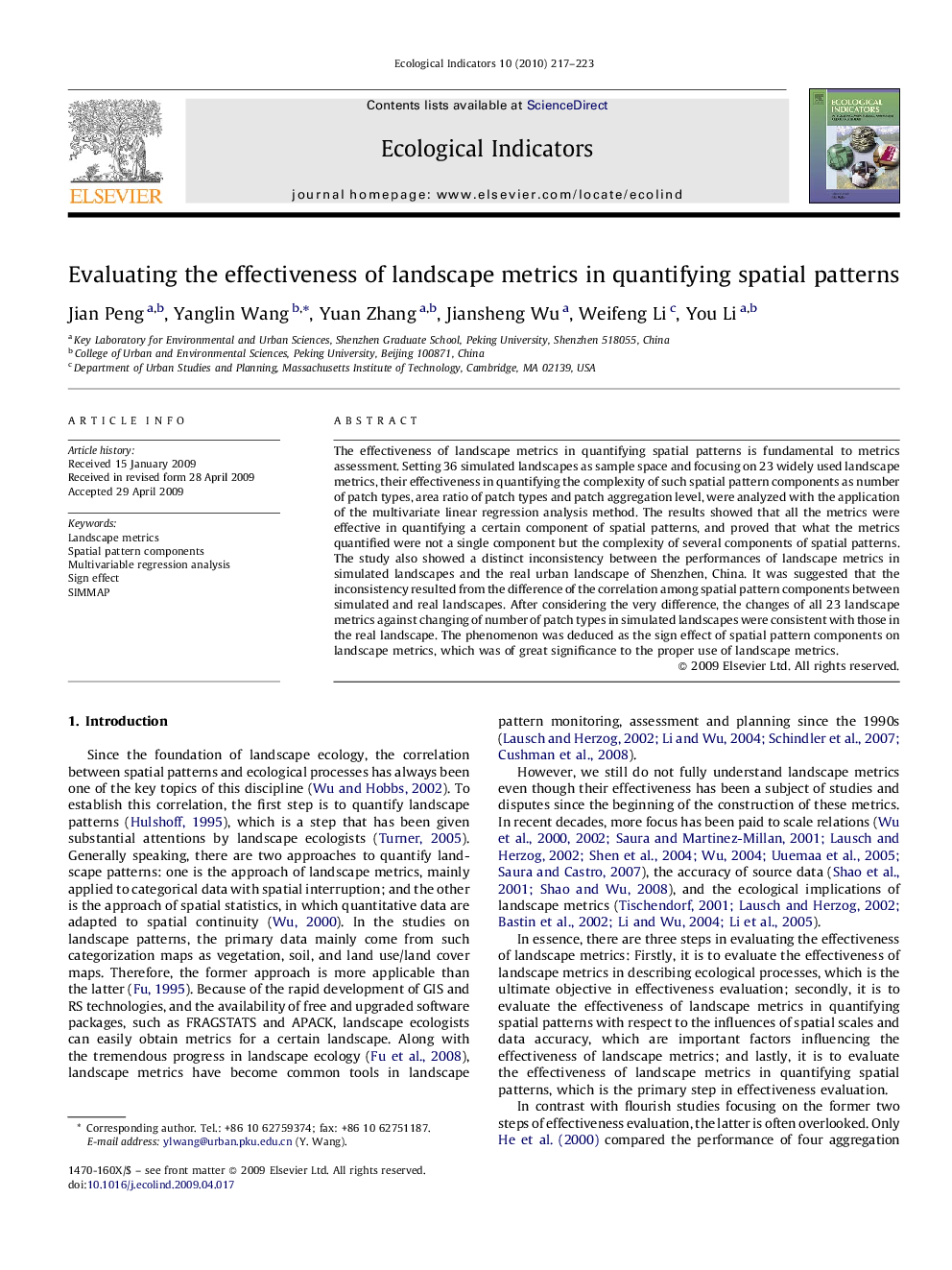| Article ID | Journal | Published Year | Pages | File Type |
|---|---|---|---|---|
| 4374276 | Ecological Indicators | 2010 | 7 Pages |
The effectiveness of landscape metrics in quantifying spatial patterns is fundamental to metrics assessment. Setting 36 simulated landscapes as sample space and focusing on 23 widely used landscape metrics, their effectiveness in quantifying the complexity of such spatial pattern components as number of patch types, area ratio of patch types and patch aggregation level, were analyzed with the application of the multivariate linear regression analysis method. The results showed that all the metrics were effective in quantifying a certain component of spatial patterns, and proved that what the metrics quantified were not a single component but the complexity of several components of spatial patterns. The study also showed a distinct inconsistency between the performances of landscape metrics in simulated landscapes and the real urban landscape of Shenzhen, China. It was suggested that the inconsistency resulted from the difference of the correlation among spatial pattern components between simulated and real landscapes. After considering the very difference, the changes of all 23 landscape metrics against changing of number of patch types in simulated landscapes were consistent with those in the real landscape. The phenomenon was deduced as the sign effect of spatial pattern components on landscape metrics, which was of great significance to the proper use of landscape metrics.
